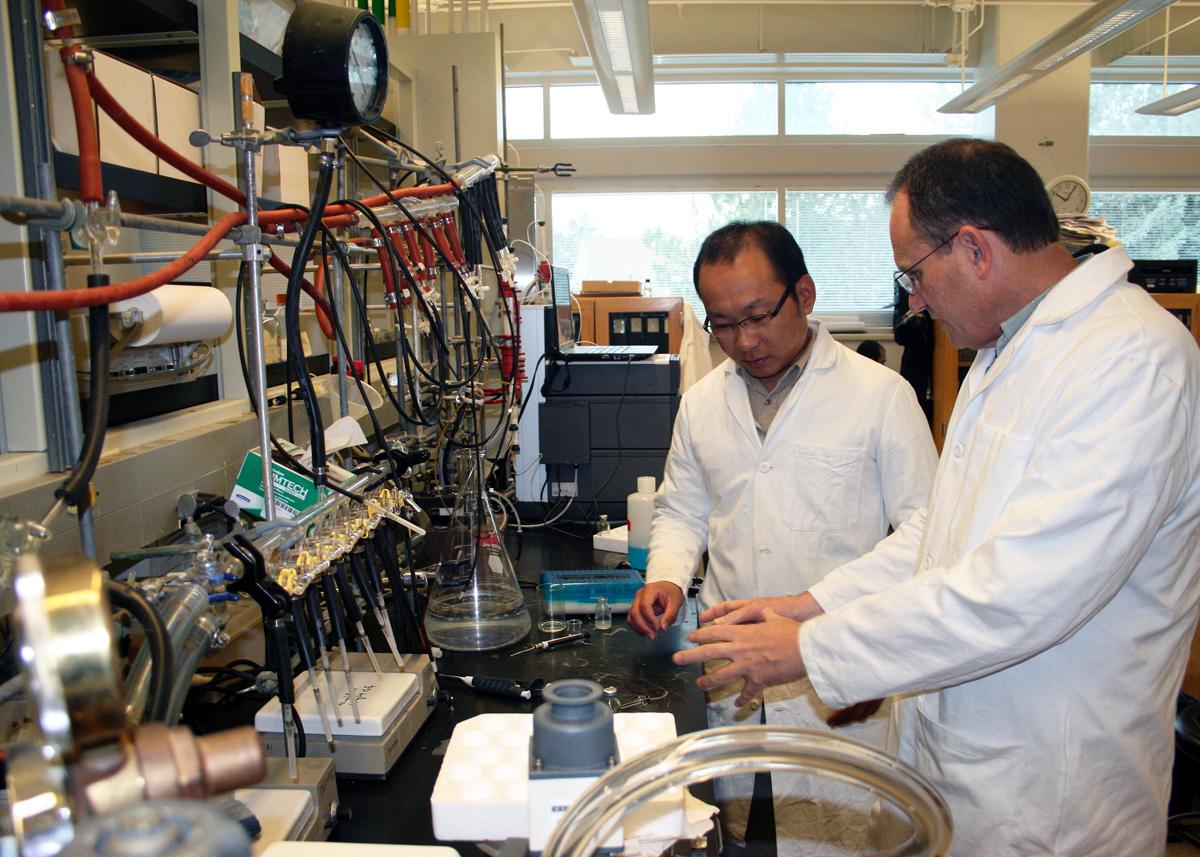New methods may make fuel from carbon dioxide
What if the air you breathe out could be used to help solve the world’s energy crisis?
Lance Seefeldt, a professor of chemistry and biochemistry at USU, has been working with a team of biochemists to figure out a way to do this. Seefeldt and a team consisting of undergraduate and graduate students, as well as a collaborator from Virginia Tech, have been researching a way to convert carbon dioxide into methane.
The research started after an unexpected discovery during another project studying organisms that live in the dirt. Seefeldt said the team has been researching bacteria that live in the soil for about two years. The team discovered the bacteria could take some of the gasses that live in the air and convert them into entirely different gasses, Seefeldt said.
“In the process of doing that, it occurred to us that they bacteria might be able to turn carbon dioxide into methane,” Seefeldt said.
Seefeldt said if the team were to find a way to convert carbon dioxide into methane, the world would see lower levels of carbon dioxide and useful fuels being produced from cheap, abundant compounds.
The process wasn’t successful at first. The area around the bacteria where the chemistry occurs was too tightly packed with carbon dioxide.
“We asked ourselves, ‘Can we give it more room?’,” Seefeldt said. “So, using genetic engineering, we did that. When we did that, it worked. Now carbon dioxide could get in there and get turned into methane.”
Seefeldt said while the discovery is important, the small amount of methane the bacteria produced is not the most important thing the team discovered.
“We were really excited about that, not because we think the enzyme will be used, but because we can learn from it,” Seefeldt said.
The process is far from having been perfected, Seefeldt said. He said there are still many things that need to be understood about the process as a whole before greater progress can be made.
“What we need to do is understand the whole picture first,” he said. “Then we will apply those principles we learn to the design of better catalysts.”
Seefeldt said another challenge with the project is how small the enzymes they’re working with are.
“These enzymes are microscopic,” Seefeldt said. “For us, it’s a challenge to understand how they’re working when we can’t even see them with a microscope.”
He said the discovery is important for many reasons.
“It offers, for the first time, some insights on how we can take this very abundant gas and convert it back into valuable and useful compounds,” he said.
Zhiyong Yang, a graduate student studying biochemistry, is a member of Seefeldt’s team. Yang said he thinks the project could possibly revolutionize energy and ecology in the future.
“When I found this reaction, I was so excited because one thing is reduction of carbon dioxide is very hard,” Yang said. “Even in basic chemical research there are only two or three examples that can do this reaction, but the efficiency is still very low.”
Yang said the current reaction, however, isn’t much more efficient.
“The point here is that now at least this one enzyme can do this hard reaction,” Yang said. “At the same time, the optical here is about the same as those organic catalysts. It’s not huge.”
What sets this project apart from others is the type of reaction the team is getting, Yang said.
“This reaction is unique,” he said. “At this time, no catalyst can do this reaction.”
Yang said although this discovery is important, it is not going to solve the world’s energy crisis anytime soon.
“To be something to solve global warming issues, I think it’s still far away from that point,”
Yang said. “I really don’t want to say we found this reaction and we solved the problem.”
Yang said in the meantime, the project is “one huge step.”
– katelinch@gmail.com

